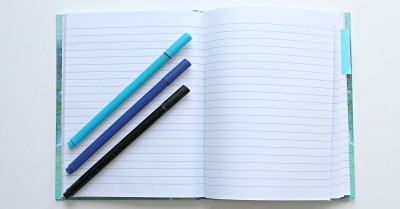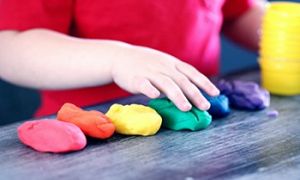Anecdotes are the most commonly used tool in gathering information about children.
Anecdotal records are written in the past tense. Observation starts when the child begins the experience and ends when the child stops participating in the experience. It’s a useful method to record events or actions based on the child’s strengths, interests, achievements, development and needs.
One of the main reasons for this is because they are quick to record. a useful method for recording significant events or actions that tell us something about the child's development, interests, skills, abilities and needs. Such as observing a child climbing on the playground equipment will provide information on their gross motor development or observing a child crying during drop-offs will tell you about the child's social/emotional development.
How To Write an Anecdotal Record
When observing young children, it is important to remember what an observation is. An observation does not include any bias or assessment.
Non - Bias
Observation for Lauren, age 3 years, 4 months: Lauren walked to the dress-up area with Caitlin. Lauren chose a purple dress and blue high heels. After dressing herself, she stood in front of the mirror and smiled. She poked Caitlin on the arm and said, “Look, Cait! I am a princess!”
Bias
Lauren happily walked to dress-up with Caitlin. She was excited when she picked up the dress and put it on. She put shoes on, too. She liked what she saw in the mirror and said to Caitlin: “I am a princess”
Since we are not Lauren, we do not know if she was happy, excited, or that she liked what she saw in the mirror. We can assume that from her facial expressions, but observations are not the place for assumptions. It is a better idea to include your observations of her facial expressions than assume that she was happy, excited, or proud.
When writing...
Anecdotal:
- Describe exactly what you see and hear; do not summarize behaviour or what you are observing.
- Use words conveying exactly what a child said and did.
- Record what the child did when playing or solving a problem, their interests basically anything.
- Use specific language to describing what the child said and did including facial expression and tone of voice.
- Avoid interpretations of the child’s behaviour; For example “He put on a firefighter’s hat and said, “Let’s save someone!” or “He looked towards the puzzle piece and then looked toward the puzzle. He put the puzzle piece on the puzzle and turned the piece until it fit. He took the puzzle piece out.” Avoid using judgmental language
Interpretation - Linking With The EYLF
- What specific inferences can you make from this anecdotal record?
- What EYLF milestones is the child achieving?
- What EYLF milestones is the child working towards?
- What does it tell you about this child’s growth and development?
- How Children Can Achieve Outcomes
The inferences must be directly related to the outcomes in the anecdote.
Implication for Planning:
- Give a specific experience/activity that you would incorporate into curriculum planning as a result of what you learned about this child. Be sure the plan is directly related to the outcomes described in the anecdote. Be sure the experiences are different than the one in the anecdote and include a brief explanation of why you would create a specific activity.
- How Educators Promote EYLF Outcomes
Examples Of Anecdotal Records:
- Christopher played with the drama materials for 15 minutes, using the dress-ups and examining himself in the mirror. He walked over to the home corner table and said to another boy, 'Hey give me that.' He took the spoon from the other student. I spoke to Christopher and asked him to give the spoon back to the other student. He gave the spoon back and said, 'I like choc milk and a biscuit too!' I asked the children to pack away. Another adult approached Christopher asking him to help pack away. Christopher replied to the adult, 'And then can we go outside?' The adult replied 'Yes!' Christopher shouted 'Yay' and started packing away.
- Melissa sat next to Tina at the reading table. Tina greeted Melissa with "Hi, Melissa! Wanna read a book with me?"Melissa said that she couldn't read. Tina replied, "We can look at the pictures."
- In the block centre, Jamie and Catherine began to argue over who would drive the dump truck. Maria said, "Nobody can be my friend if I'm not the driver." Catherine suggested that there were two other trucks and an aeroplane--she could be the pilot and everyone else could drive a truck.
- Destiny looked in the sensory bin. She picked up a picture of Katie. I asked her who she found. She said, "I found Katie."Then she walked over to Katie and said, "Look, I found you."
Remember:
- Result of direct observation.
- Accurate and specific.
- Gives context of the child's engagement within the environment.
- Record the child's interest, skills, achievements, strengths etc.
Hints:
- Keep a notebook handy to make brief notes to remind you of incidents you wish to include in the record. Also include the name, time and setting in your notes.
- Write the record as soon as possible after the event. The longer you leave it to write your anecdotal record, the more subjective and vague the observation will become.
- In your anecdotal record identify the time, child, date and setting
- It is a good idea to carry a notebook and pen with you at all times.
- Quickly jot down some brief notes to jog your memory. Later when time permits refer to your notes and write them up as an anecdotal observation
- The objective analysis is not conclusions or diagnoses.
- Include details of the child's behaviour such as actions and comments
- Use evidence of exact words.
References:
Different Types Of Observation Methods, Aussie Childcare Network
Anecdotal records, Montessori Learning USA
Keeping Anecdotal Records, Bright Hub Education
Chidren and Writing Anecdotal Records, Slide Share







 Here is the list of the EYLF Learning Outcomes that you can use as a guide or reference for your documentation and planning. The EYLF
Here is the list of the EYLF Learning Outcomes that you can use as a guide or reference for your documentation and planning. The EYLF The EYLF is a guide which consists of Principles, Practices and 5 main Learning Outcomes along with each of their sub outcomes, based on identity,
The EYLF is a guide which consists of Principles, Practices and 5 main Learning Outcomes along with each of their sub outcomes, based on identity, This is a guide on How to Write a Learning Story. It provides information on What Is A Learning Story, Writing A Learning Story, Sample
This is a guide on How to Write a Learning Story. It provides information on What Is A Learning Story, Writing A Learning Story, Sample One of the most important types of documentation methods that educators needs to be familiar with are “observations”. Observations are crucial for all early childhood
One of the most important types of documentation methods that educators needs to be familiar with are “observations”. Observations are crucial for all early childhood To support children achieve learning outcomes from the EYLF Framework, the following list gives educators examples of how to promote children's learning in each individual
To support children achieve learning outcomes from the EYLF Framework, the following list gives educators examples of how to promote children's learning in each individual Reflective practice is learning from everyday situations and issues and concerns that arise which form part of our daily routine while working in an early
Reflective practice is learning from everyday situations and issues and concerns that arise which form part of our daily routine while working in an early Within Australia, Programming and Planning is reflected and supported by the Early Years Learning Framework. Educators within early childhood settings, use the EYLF to guide
Within Australia, Programming and Planning is reflected and supported by the Early Years Learning Framework. Educators within early childhood settings, use the EYLF to guide When observing children, it's important that we use a range of different observation methods from running records, learning stories to photographs and work samples. Using
When observing children, it's important that we use a range of different observation methods from running records, learning stories to photographs and work samples. Using This is a guide for educators on what to observe under each sub learning outcome from the EYLF Framework, when a child is engaged in
This is a guide for educators on what to observe under each sub learning outcome from the EYLF Framework, when a child is engaged in The Early Years Learning Framework describes the curriculum as “all the interactions, experiences, activities, routines and events, planned and unplanned, that occur in an environment
The Early Years Learning Framework describes the curriculum as “all the interactions, experiences, activities, routines and events, planned and unplanned, that occur in an environment


